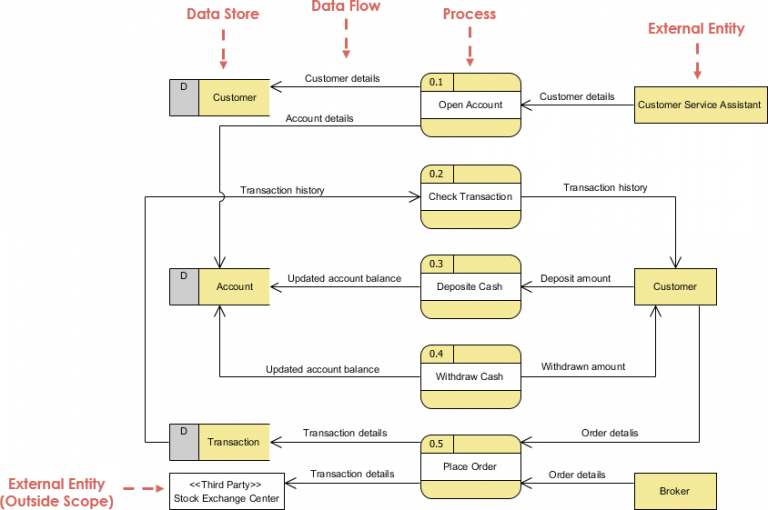


All external entities are shown on the context diagram, as well as major data flow to and from them. The context diagram is the highest level in a data flow diagram and contains only one process, representing the entire system. This diagram will be the most general one, really a bird’s-eye view of data movement in the system and the broadest possible conceptualization of the system. The initial context diagram should be an overview, one including basic inputs, the general system, and outputs. Although the first diagram helps the systems analyst grasp basic data movement, its general nature limits its usefulness. With a top-down approach to diagramming data movement, the diagrams move from general to specific. Although they communicate independently, that communication is not part of the system we design using DFDs.

This list in turn helps determine the boundaries of the system you will be describing. To begin a data flow diagram, collapse the organization’s system narrative (or story) into a list with the four categories of external entity, data flow, process, and data store. Partition the physical data flow diagram by separating or grouping parts of the diagram in order to facilitate programming and implementation.
#VISUAL PARADIGM CONTEXT DIAGRAM MANUAL#
Distinguish between manual and automated processes, describe actual files and reports by name, and add controls to indicate when processes are complete or errors occur. Develop a physical data flow diagram from the logical data flow diagram.Check for errors and make sure the labels you assign to each process and data flow are meaningful.Create a child diagram for each of the processes in Diagram 0.Do not show any detailed processes or data stores. Create a context diagram that shows external entities and data flows to and from the system.Make a list of business activities and use it to determine various.Developing Data Flow Diagrams Using a Top-Down Approach First, the systems analyst needs to conceptualize data flows from a top-down perspective. Table illustrated below summarizes the steps involved in successfully completing data flow diagrams. Data flow diagrams can and should be drawn systematically.


 0 kommentar(er)
0 kommentar(er)
